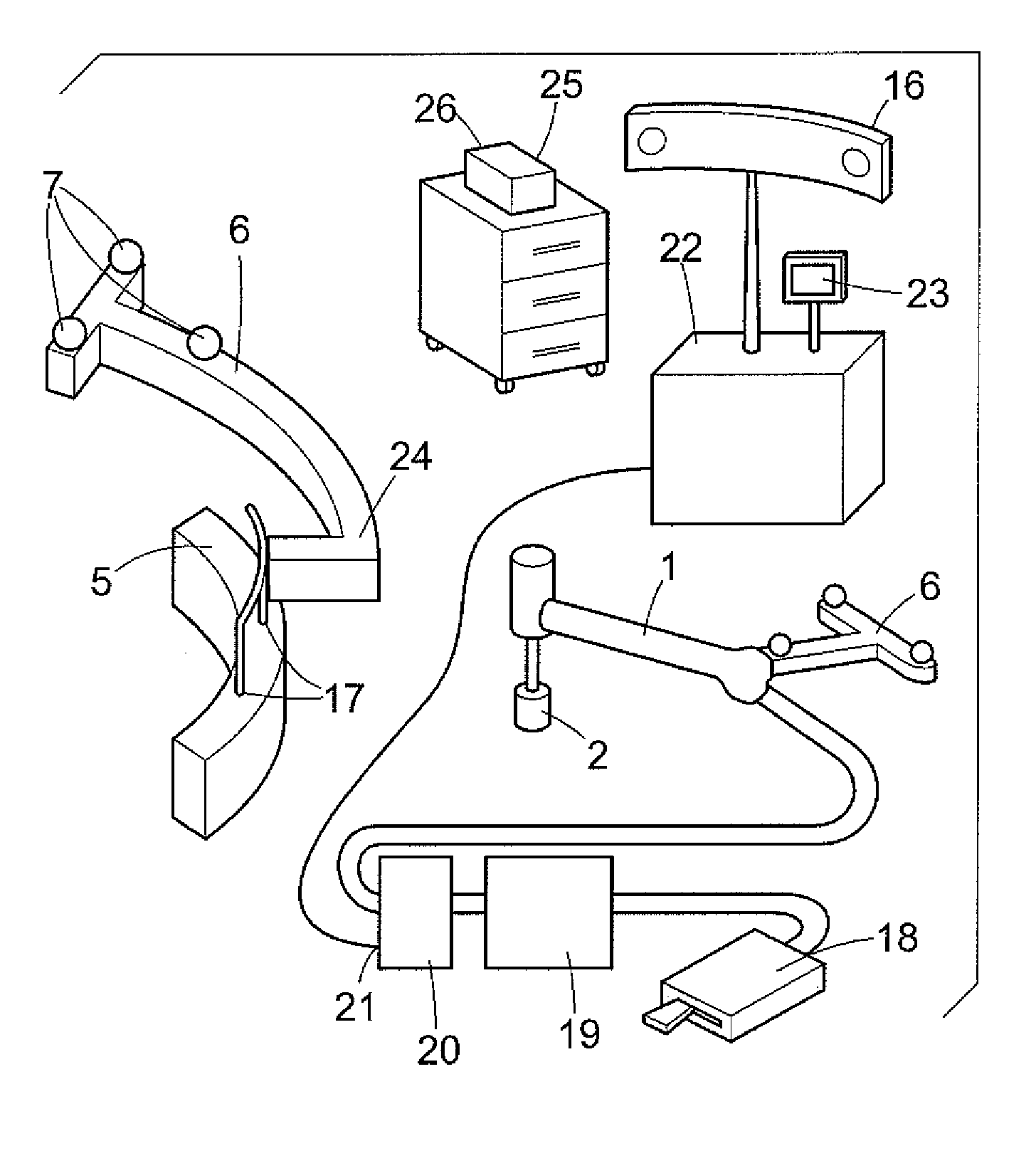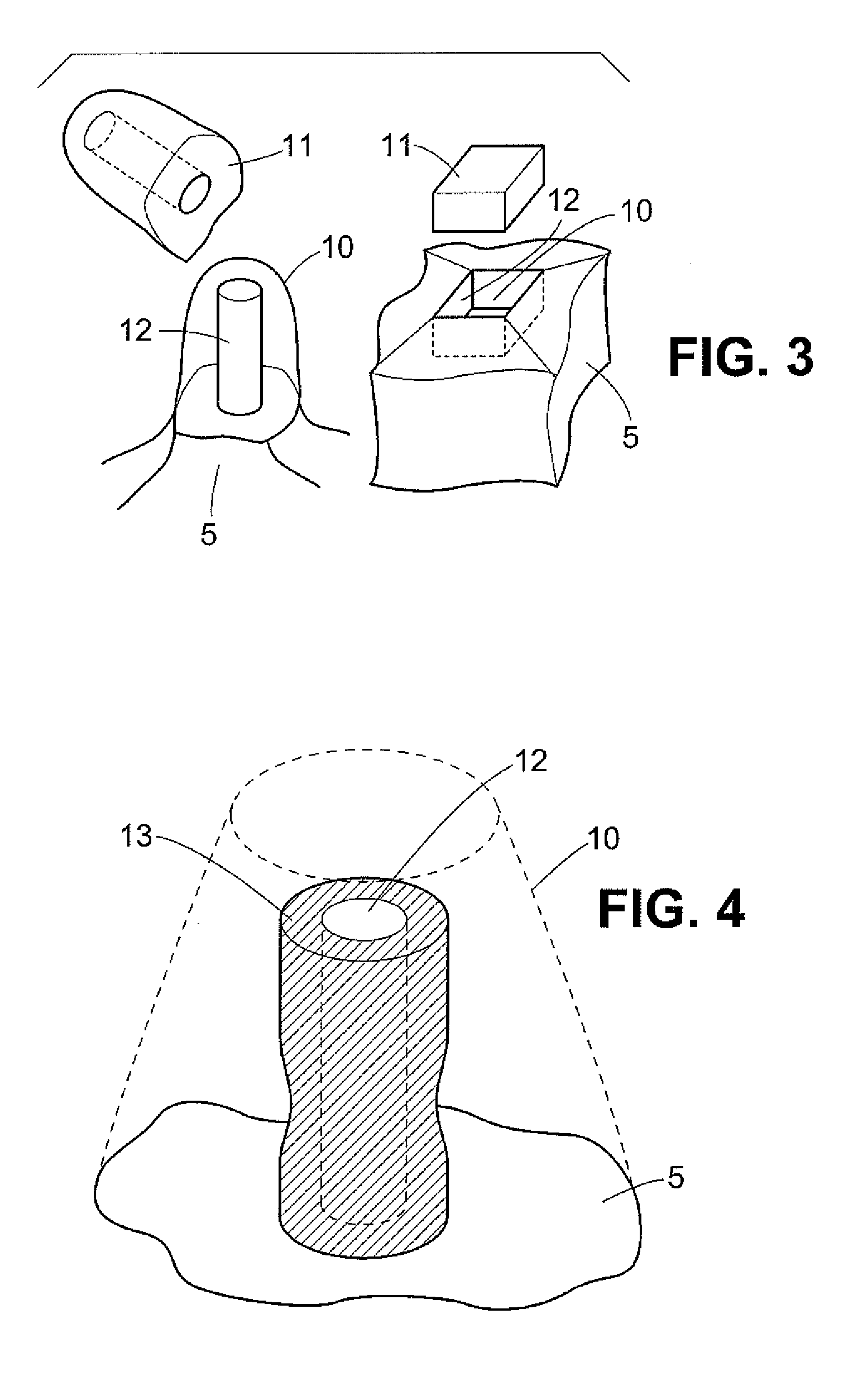Method and device system for removing material or for working material
a technology of a working material and a method is applied in the field of a method and a system for removing material or tissue and treating material or tissue, which can solve the problems of increasing the complexity of the device, not allowing the user who manually treats hard tissue to detect, and increasing the cost of the devi
- Summary
- Abstract
- Description
- Claims
- Application Information
AI Technical Summary
Benefits of technology
Problems solved by technology
Method used
Image
Examples
Embodiment Construction
[0074]FIG. 1 shows the handpiece of a medical instrument with a tissue-removing effector 2 in a measurable effector position (position and orientation) 3 relative to a reference position 4 of a tissue object 5. The tissue-removing geometry of the effector 2 is known to be almost unchangeable (e.g., cutters, drills) or can be measured and / or adjusted (e.g., laser). The power for removing the tissue can be at least switched on and off, or preferably controlled. The effector 2 can be implemented as a saw blade, a drill, a cutter, a water or particle beam, a laser beam, ultrasound, or as another type of effector for removing tissue. The relative position T_EFF of the tissue-removing effector 3 relative to the reference position 4 T_OBJ of the tissue object 5 can be determined, for example, by a coordinate measurement method based on artificial or anatomic measurement markers located at a known position. FIG. 1 shows marker supports 6 which are secured in a fixed position relative to the...
PUM
 Login to View More
Login to View More Abstract
Description
Claims
Application Information
 Login to View More
Login to View More - R&D
- Intellectual Property
- Life Sciences
- Materials
- Tech Scout
- Unparalleled Data Quality
- Higher Quality Content
- 60% Fewer Hallucinations
Browse by: Latest US Patents, China's latest patents, Technical Efficacy Thesaurus, Application Domain, Technology Topic, Popular Technical Reports.
© 2025 PatSnap. All rights reserved.Legal|Privacy policy|Modern Slavery Act Transparency Statement|Sitemap|About US| Contact US: help@patsnap.com



